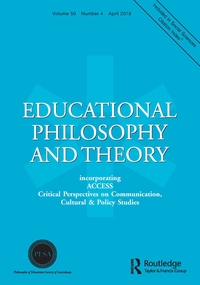A new volume Edusemiotics—A Handbook (Springer, 2017) has the following to say on its dedication page:
This book is dedicated to the great John Deely, a dear friend and colleague whose research in the theory and history of semiotics is unsurpassable. His work is a lasting inspiration for generations of students to come, in philosophy, semiotics, and now edusemiotics.
John’s systematic research in semiotics and semiosis began in 1968 when he met outstanding American semiotician and polymath Thomas Sebeok. Deely was secretary of the committee drafting the constitution for the 1975 founding of the Semiotic Society of America (SSA). He functioned as the Executive Director of the society in 2006–2007. Deely’s 1981 essay ‘The relation of logic to semiotics’ won the first Mouton D’or Award for Best Essay in the Field in the Calendar Year. Deely’s 1990 book Basics of Semiotics remains an invaluable resource for scholars in semiotics, philosophy and, yes, educational theory, and has been republished in six expanded editions across nine languages. Among Deely’s numerous publications are: Intentionality and Semiotics (Scranton: 2007); Descartes & Poinsot: The Crossroads of Signs and Ideas (Scranton: 2008); Semiotics Seen Synchronically: the View from 2010 (LEGAS: 2010); Medieval Philosophy Redefined: The Development of Cenoscopic Science, AD354 to 1644 (From the Birth of Augustine to the Death of Poinsot) (University of Scranton: 2010); Purely Objective Reality (De Gruyter Mouton: 2011). I especially love his 1000-plus-page tome Four Ages of Understanding, from which I continue to learn, and I take pride in the signature he placed in this book for me back in 2001.
John was a friend, even if we met mostly at the SSA meetings that, to my regret, I was able to attend rather irregularly. The last time we met was at the 12th World Congress of The International Association for Semiotic Studies (IASS) ‘New Semiotics: Between Tradition and Innovation’ at the New Bulgarian University in Sofia on 16–20 September 2014. It was the year edusemiotics was launched, the new field that brought together semiotics and philosophy of education, and it was there that the panel on edusemiotics, that included such presenters as our colleagues in educational theory Andrew Stables and Alin Olteanu, took place. John’s scholarship inspired the creation of edusemiotics and continues to inform current research and development in this new area: he was the first author on the recent article ‘Semiotics, edusemiotics and the culture of education’, published in EPAT in 2016. The brief lines of John’s bionote that appeared in this paper are too sketchy to do any justice to him:
John Deely is Philosopher-in-Residence at St. Vincent College, PA, USA. He holds the Rudman Chair in Philosophy at the University of St. Thomas, Houston, Texas. Among his numerous volumes are Four Ages of Understanding: The First Postmodern Survey of Philosophy from Ancient Times to the Turn of the Twenty-First Century; and Purely Objective Reality. He is the Editor of The American Journal of Semiotics. He served two terms as Vice-President of the International Association for Semiotic Studies (IASS).
Inna Semetsky
Institute for Edusemiotic Studies, Melbourne
… If there is one notion that is central to the emerging postmodern consciousness, that notion is the notion of sign … On one side stand those who think that the general notion of sign is an empty name, a flatus vocis, a nominalism … On the other side are those who are able to ground the general notion in an understanding of relation as a unique, suprasubjective mode of being, a veritable dual citizen of the order of ens reale and ens rationis alike, according to shifting circumstances.
Modern philosophy, from this point of view, appears essentially as an exploration of the nominalist alternative; and postmodern thought begins with the acknowledgment of the bankruptcy of the modern effort, combined with the determination pioneered by C. S. Peirce to explore the alternative …
So derives the title for this work, Four Ages of Understanding: ancient Greek thought, the Latin Age, modern thought, postmodern thought. The book is a survey of philosophy in what is relevant to the ‘understanding of understanding’ from ancient times to the present. It is intended both as a reference work in the history of philosophy and a guide to future research—a ‘handbook for inquirers’ in history, philosophy, and the humanities generally …
From Four Ages of Understanding: The First Postmodern Survey of Philosophy from Ancient Times to the Turn of the Twenty-First Century, pp. XXX–XXXI
Toronto: University of Toronto Press


